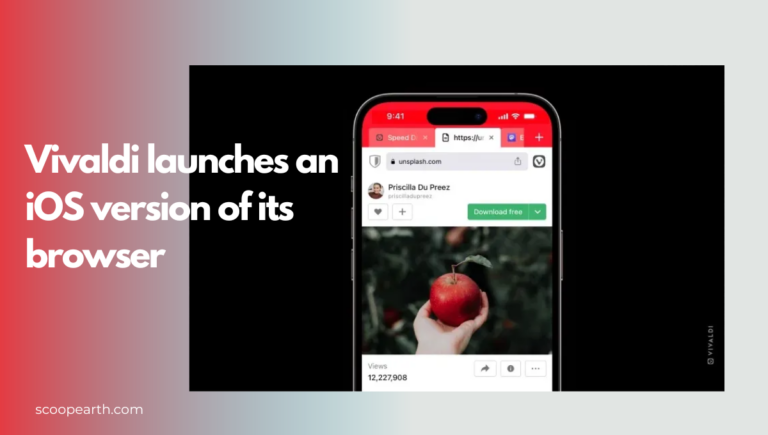Vivaldi, a well-known web browser celebrated for its extensive customization options and rich feature set, has broadened its horizons by introducing an official iOS version. This exciting development now allows Apple device users to immerse themselves in the distinctive Vivaldi browsing experience, whether they are using an iPhone or an iPad. Whether your preferences lean towards advanced tab management, personalized user interfaces, or a focus on privacy during your online sessions, Vivaldi for iOS is designed to offer a smooth and feature-rich solution to cater to your web browsing requirements.
Nearly eight years after former Opera CEO Jon von Tetzchner unveiled a brand-new desktop browser, his firm, Vivaldi, today unveiled its iOS version.

Vivaldi uses WebKit, now required as the primary engine for all iOS browsers. Von Tetzchner said “This was the main reason they had to start over while creating the iOS version. Notably, the business first released its browser for Android devices in 2018.”
Von Tetzchner said that future EU laws would ideally allow developers to utilize engines other than WebKit for improved performance and flexibility.
Thanks to its desktop-style tab bar, you can view what other tabs are active without using the tab switchers with Vivaldi for iOS. If you don’t like this view, it can be turned off in settings.
Open tabs, secret tabs, synced tabs with other Vivaldi instances, and recently closed tabs are all accessible through the tab switcher. You can open a new account, a private bill, or complete the existing charge with a long press on the tab switcher.
Vivaldi’s term for bookmarks, “Speed Dials,” will appear on any new blank tab page, and you can edit them as you see fit. Additionally, Vivaldi for iOS has helpful note-taking and reading-list features that can be synced between devices.
The new app also features configurable icons, the option to quickly switch between search engines, and built-in tracker and ad blockers. Vivaldi is launching its browser on iPad in addition to the iOS version. For the iPad, it has created a sidebar where you can access items like bookmarks, reading lists, history, and notes.
According to Von Tetzchner, Vivaldi has 2.5–3 million users across all platforms. Deals with different search engines help the business make money; von Tetzchner clarified that Google is not one of them.
Vivaldi has made its presence felt across many platforms, embracing Windows, Android, Mac, Linux, Raspberry Pi, and even automobiles, courtesy of its compatibility with Android Auto. This latest foray into iOS marks a significant milestone in Vivaldi’s journey. Notably, Google incorporated Vivaldi into the Play Store for Android Auto in September of the previous year.
While in September 2021, an official iOS version of Vivaldi’s web browser had yet to be introduced, it’s worth highlighting that the landscape of software development and release strategies can shift rapidly. Consequently, there is a chance that Vivaldi has since unveiled an iOS edition of its browser. To acquire the most current information regarding Vivaldi’s browser offerings, visit the official Vivaldi website or peruse the Apple App Store for any recent developments or announcements related to Vivaldi on iOS.
[Source of Information: Techcrunch.com]










